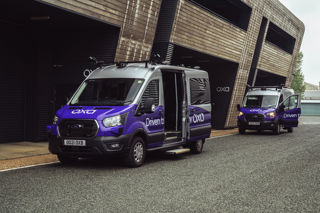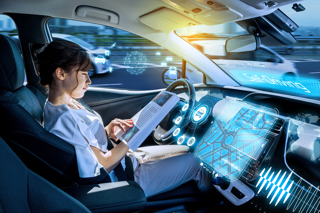Fleet managers will need to familiarise themselves with the different kinds of autonomous car technologies as they start to arrive on the market, accoridng to leasing company Arval.
There will be no overnight shift to driverless vehicles - instead the next few years will see a range of stepping stones towards autonomous driving, explained Shaun Sadlier, head of consultancy at Arval UK.
He said: “There has been a lot of attention given to the recent announcement from Ford that they intend to have a fully autonomous, mass-market car available within five years. This is an ambitious target and it will be interesting to see their progress.
“While the planned car would most likely be initially operated as an autonomous taxi, this news still strongly signals that existing, major manufacturers are serious about the technology and believe it is viable for commercial use in what is a comparatively short space of time.
“However, before we reach a point where driverless cars are potentially available as company vehicles, there will be a number of interim steps, and fleet managers will need to know their way around them in some detail.”
Sadlier said that the development of this technology was expected to follow a pattern known as “feet-off, hands-off, brain-off.”
“We’ve had ‘feet-off’ technology in the shape of basic cruise control for decades and the arrival of radar cruise is a development that is now becoming available on mainstream fleet cars.
“The next step is ‘hands-off’ and we are just starting to see this on production cars with perhaps the best known example being Tesla’s Autopilot, which provides automated motorway driving. We expect to see many more features of this type over the next few years.
“In both cases, ‘brain-on’ remains important. While the vehicle is providing a high level of assistance to the driver, it is essential that they continue to concentrate on the road ahead and the traffic around them in order to stay safe.
“Therefore the third step, ‘brain-off’, is a major change and to some degree a leap of faith. It is when we will see effectively driverless cars of the kind that Ford say they will bring to production. These will clearly represent a revolution in the whole business of driving.”
He said that each step in the evolution of autonomous technology represented a different set of challenges for fleet managers.
“For example, the arrival of Autopilot-style features raises a whole series of questions. Where do you stand from a risk management point of view? How does your insurer view such technology? Will drivers use it responsibly or is there a risk of abuse?
“Steps beyond this towards full autonomy create even more questions. You start to move into an area where you are questioning whether the car or the driver is responsible for safety. These are complex matters, especially bearing in mind that a legislative framework for such vehicles doesn’t even exist yet.”
Sadlier said that, if the Ford promise proved correct and an autonomous car was available within five years, then the fleet industry needed to start a dialogue now.
“There are a whole range of people who need to be involved in such a discussion – manufacturers, legislators and insurers alongside fleet decision makers. Certainly, as a company, we closely monitoring the technology that is becoming available and developing the advice that we provide to our customers.”
Recent research completed by Arval showed that 43% of UK fleets believe that employees will easily accept using these vehicles.
He added: “Bearing in mind that virtually no fleet managers will have yet had the chance to examine an autonomous car, we believe that this figure is quite high. However, it shows that there is definite enthusiasm for the technology.”




















John Davidge - 14/09/2016 12:12
There are some very basic factors to think about with driverless vehicles that haven't even been mentioned yet, aside from trust in the technology: - Who is going to fill it up when empty - and pay for the fuel used? - Are we expecting the passenger to get out and put fuel in? (think mis-fuelling!) - Are we expecting the service station attendant to do so? (it's been a while since I saw one of those.) - Who takes responsibility for journey planning via a filling station (that is open at the time - in my area there are few full-time garages). - And with pool cars we know the challenges of pre-checks (we still have to think about damage caused by other vehicles when parked up) and getting someone to fill it up when taking it back ready for the next (non) driver to use it. - Whose responsibility to report the damage - and to whom - and is it driveable with that damage? The technical achievements are fascinating but the simple practical considerations may well cause more problems. It will be interesting to see proposals but i suspect it may well be 'not in my driving lifetime.' Meanwhile I will continue to go my own way - under my own control!